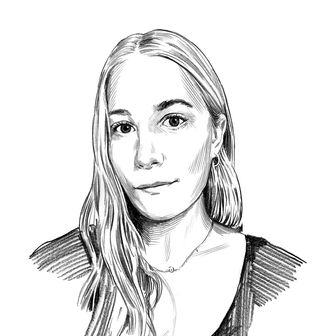
I was 12 years old in March 2003, when I watched footage of the United States bombing Baghdad on cable TV. I don’t know what time it was, but I know I was wearing pajamas; I remember because on television it was nighttime in Iraq. The city glowed grainy in nightscope-vision green, until it was lit up by a storm of bright white projectiles from the sky. I thought about how some of those people down there must be wearing pajamas.
Media scholars and sociologists at the time who were watching us watch the war were already worried. They saw how the unprecedented flood of video and images helped to sublimate chaos and confusion into order and glory. “When I looked at the news on television, it did not look like anyone had been killed or was in danger of being killed,” one of them told the New York Times. ”It didn’t look like anybody was even living in Iraq.”
Last night, as news broke that Iranian general Qasem Soleimani had been killed by U.S. forces via targeted airstrike in Baghdad, I wasn’t watching TV. I don’t pay for cable — instead, I was on Twitter. There were no pictures or videos of Soleimani’s assassination. I was processing the event mostly with words, live, along with thousands of people; what I was watching was them.
Thanks to the preempting of the Twitter app, my feed updated itself as posts continually rolled in. I didn’t even have to touch my phone much for it to show me what everyone was sharing, immediately. Iran was going to retaliate. The event was as pivotal as the death of Franz Ferdinand. No, actually, it wasn’t. People were earnestly afraid. People joked about how we were going to die. “WorldWarIII” began trending on the sidebar next to the river of thoughts, under “ThisIsMyWW,” WW for “Weight Watchers.” In between, some women were arguing with a famous author about Little Women. People described what the news was interrupting for them: meals, dates. People got off of planes and turned on their phones. “Uh oh,” they said. “Woof.”
I was watching them and I was also watching myself, as I felt a creeping urge to share my own reaction, to say something, to respond to this death a world away from my computer. I was in my pajamas. My “take” was forming, with a sense that if I expressed it, the thing that was happening and the anxiety it caused would be over, for me at least. I would post and then I could go to bed. At that feeling — this promise of comfort and satisfaction, of doing my part — I was absolutely horrified.
Memories from watching television sixteen years ago, when I understood almost nothing about Baghdad as it was ripped apart, were more visceral to me in those moments than being an adult, awake and online for this world historical event, as my thumb moved laconically over phrases like “American lives,” “American soil,” “strike,” “blood.” The voices expressing anguish and protest became consumed in the feed with the ones that were not, all of this content neutralized by the same font, the same formatting, the same boxes and icons. The constant churn of response and reaction, the unrelenting slurry of information, did not bring the death of Soleimani, the possibility of war, the millions of people in danger in the Middle East, their homes closer. It only rendered those things more unreal. If cable TV in 2003 made Iraq look like a place where no one lived, Twitter made it seem like it wasn’t even really there.
In the maw of the posting machine, nothing sticks. Code travels but no power shifts. It was terrifying to be suddenly aware of how much time and attention I’ve given over to this strange place where everything happens, but nothing happens, where empathy circles around but ultimately drains out. To see how these new behaviors and habits have co-opted my sense of what it means to be moved to action, convincing me I’m doing something when I’m doing nothing, risking nothing — or, worse, that there is nothing else I can actually do or risk, when of course there is. Of course there is.


